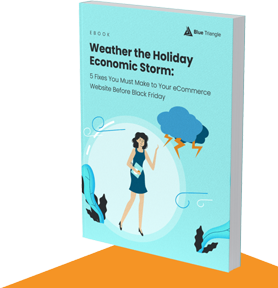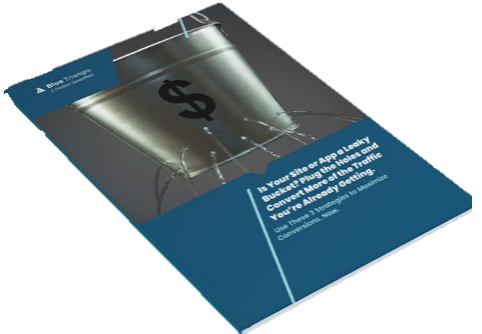MVP is dead. Here's what's next...
That's what Nakul Goyal, Head of Growth at CARFAX, boldly declared on an episode of The Frictionless Experience.
But why? Because rushing Minimum Viable Products (MVPs) often leads to:
- Compromised features
- Frustrated teams
- Products nobody loves
Instead, Nakul advocates for building "Minimally LOVABLE Products" (MLP)—a game-changing approach delivering massive results at CARFAX.
The Problem with MVP
The difference between a Minimum Viable Product and a Minimum Lovable Product is the mindset. MVPs often focus on just getting something out the door as quickly as possible.
But, as Nakul points out, this pressure to deliver usually causes teams to strip away so much that the product is no longer viable.
Nakul explained:
"What they're gonna do, we're unintentionally incenting them to remove scope. And I think this is friction that is self-inflicted. We put undue pressure on our teams for them to get this MVP shipped by a certain date. And when they run into obstacles, they have no choice but to remove some capability or features, and it's no longer viable."
Worse, many MVPs become final versions.
As Nick Paladino noted:
The result? A sub-viable experience that frustrates users and damages the brand.
The Shift to Minimum Lovable Product (MLP)
Instead of MVP, Nakul and his team at CARFAX focus on MLP.
"One smart person at CARFAX said it's no longer an MVP if it's MLP — Minimum Lovable Product — which I love obviously," Nakul shared.
An MLP ensures that the product is not just viable but also delightful. It shifts the focus from internal deadlines and outputs to customer satisfaction and outcomes.
Nakul put it simply:
Balancing Speed and Quality
This doesn't mean teams should slow down indefinitely, but rather that they should focus on delivering a product that actually works well for the customer.
"Sometimes it's okay to slow down before you can accelerate," Nakul said. "There's a tremendous amount of risk, and you have to put the guardrails in place so you don't unintentionally shoot yourself in the foot."
Slowing down doesn't mean stagnation. It means taking calculated, strategic steps.
Nakul shared an example of how CARFAX leverages its data-driven approach to ensure that even small changes are meaningful:
"Every project is evaluated for its potential impact. If the impact of the work that they're doing is not measurable to be half a million dollars or more, why are we doing it?"
The Role of Trust and Customer Confidence
One of the biggest differences between an MVP and an MLP is the role of trust.
Nakul explains that customers don't engage with businesses as frequently as those businesses assume. For example, CARFAX helps consumers make informed car-buying decisions, but many users only interact with the brand once every several years.
"They still need to gain confidence before they take out the wallet and enter the credit card details," Nakul said. "It's about trust, building trust in that transaction."
That's why stripping down an MVP to its bare minimum can be harmful.
If customers don't feel confident in the experience, they'll abandon it entirely. Instead of merely reducing friction, Nakul emphasizes the importance of the right friction. For instance, some extra steps in a checkout process—such as verification icons or trust signals—can increase conversions by reassuring customers.
A Culture Shift: Encouraging Outcome-Driven Thinking
Creating an MLP over an MVP requires a cultural shift within an organization. Nakul believes this starts with how teams are structured and motivated. He shared his leadership framework for building high-performing teams:
- Hiring the Right People: "You need people who understand that ROI isn't just about dollars spent—it's about time, effort, and impact."
- Setting Clear Goals: "If someone doesn't know what they're responsible for at any given time, you've failed as a leader."
- Building Rituals Around Outcomes: "Don't measure output, measure outcomes."
- Providing Constant Feedback: "You shouldn't surprise someone with a bad review at the end of the year. Performance should be transparent and ongoing."
At CARFAX, Nakul and his team use this framework to ensure that every product decision is guided by long-term value, not just short-term gains. He explains:
The Future: Moving Beyond MVP
As more companies adopt an MLP mindset, the way products are developed will continue to evolve. Nakul predicts that tools and processes will become more standardized in the next few years to ensure that testing, iteration, and optimization are built into product development from the start.
"Three years from now, this will become the norm," he said. "Companies won't be asking, 'Should we test this?' They'll already have the systems in place to make sure that testing and iteration are non-negotiable."
Final Takeaway
MVP is dead. It's time to focus on building products that customers actually love. But the shift from MVP to MLP isn't just about features—it's about mindset, culture, and ultimately creating a frictionless experience that builds trust and long-term success.
Want to hear the full conversation? Tune into this episode of The Frictionless Experience for more practical advice from Nakul Goyal.
.png)
During the holiday rush, every shopper matters
Optimize the customer journey before the eCommerce event of the year.

.jpg)




